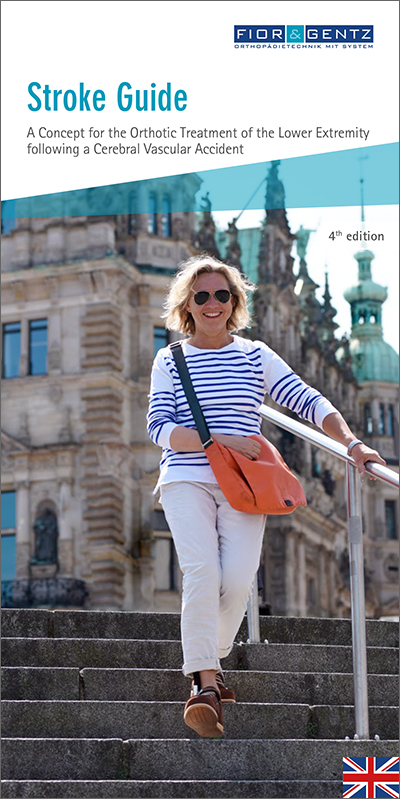Every Year, 15 Million People are Having a Stroke
A stroke also goes by the name apoplexy, seizure or cerebrovascular accident. According to the World Health Organization WHO, 15 million people worldwide suffer a stroke every year.
The faster a stroke is recognised and treated, the higher are the odds of avoiding long-term damages.
What is a Stroke?
A stroke occurs after a sudden cerebral circulatory disorder of the brain. The brain suffers a shortage for more than 24 hours so that cells might die. Affected brain areas cannot work properly anymore.
There are two main forms of stroke:
- Ischaemic stroke (most common form of stroke)
Decreased blood flow and therefore undersupply of an area
- Haemorrhagic infarction
Acute cerebral bleeding leading to undersupplied areas as the blood flows into surrounding tissue
Recognising a Stroke with the FAST Test
With the FAST test (Face, Arms, Speech, Time) it is possible to quickly confirm a suspected stroke.
F (Face) Is the person able to smile without one side of the face drooping?
A (Arms) Is the person able to stretch out both arms and turn the palms upwards?
S (Speech) Is the person able to repeat a simple sentence?
T (Time) If all symptoms occur, do not waste any time and call an ambulance!
Consequences of a Stroke
Depending on the affected brain area, different impairments can occur. Some of them are permanent. Those include:
- Impaired speech
- Impaired vision
- Restricted motor function
- Paralyses of arms and/or legs
- Impaired gait
What is a TIA?
TIA (transient ischaemic attack) is a so-called mini-stroke. Here too, a cerebral circulatory disorder is responsible. However, the symptoms disappear within 24 hours.
TIA is often the harbinger of a stroke. Cause and symptoms are the same. Even if the symptoms disappear, you should immediately seek medical attention.
Why an Orthosis Helps
A stroke can damage brain areas which are responsible for the human posture and motion. After having a stroke, the persons affected are e.g. not able to stand and walk as before. They develop a so-called pathological (abnormal) gait.
The different, abnormal gait affects the whole body:
- Muscles are not used sufficiently
- Poor postures develop
- Balance problems
- Insecurity when walking and standing
Impairments caused by a stroke can be reduced or eliminated with an orthosis. In combination with physio-/ergotherapy the patient can achieve a gait which will make him feel safe again on his feet. When walking without stumbling or, in the worst case, falling down, the patient will regain security and confidence.
An orthosis works on several levels:
- Muscle activation
- Foot lifting
- Foot and leg stabilisation
Treatment Concept Stroke
"A Concept for the Orthotic Treatment of Gait Problems after a Stroke“, in short Stroke Guide, contains orthotic treatment suggestions for the different gait types after a stroke.
The classification of gait types is based on the N.A.P. Gait Classification®. It has been developed by physiotherapists and experts in orthopaedic technology and medicine to facilitate interdisciplinary communication and help finding the best therapy.
The guide includes recommendations for orthoses and describes their effects as well as the differences to current treatment possibilities.


